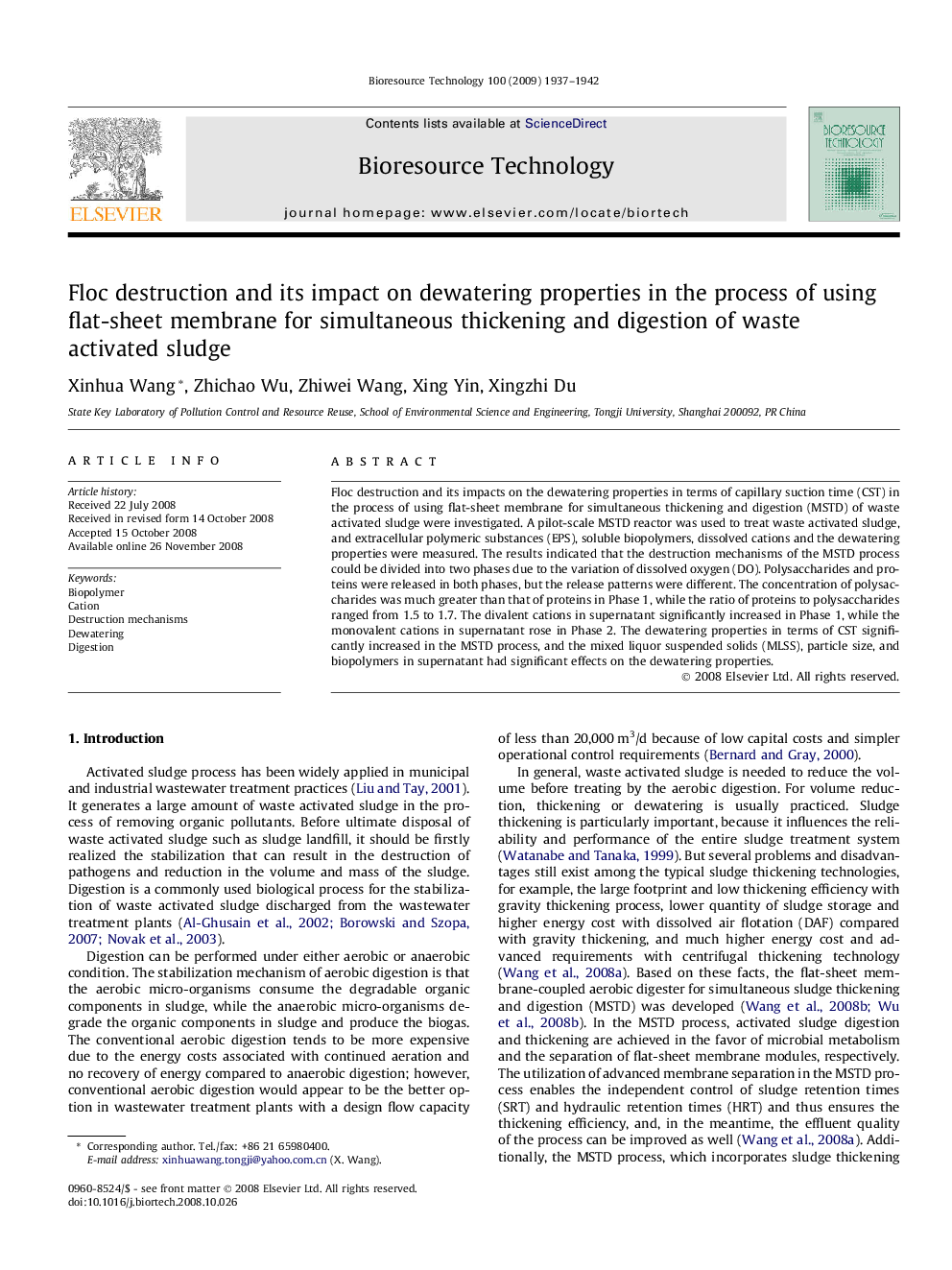| Article ID | Journal | Published Year | Pages | File Type |
|---|---|---|---|---|
| 685897 | Bioresource Technology | 2009 | 6 Pages |
Floc destruction and its impacts on the dewatering properties in terms of capillary suction time (CST) in the process of using flat-sheet membrane for simultaneous thickening and digestion (MSTD) of waste activated sludge were investigated. A pilot-scale MSTD reactor was used to treat waste activated sludge, and extracellular polymeric substances (EPS), soluble biopolymers, dissolved cations and the dewatering properties were measured. The results indicated that the destruction mechanisms of the MSTD process could be divided into two phases due to the variation of dissolved oxygen (DO). Polysaccharides and proteins were released in both phases, but the release patterns were different. The concentration of polysaccharides was much greater than that of proteins in Phase 1, while the ratio of proteins to polysaccharides ranged from 1.5 to 1.7. The divalent cations in supernatant significantly increased in Phase 1, while the monovalent cations in supernatant rose in Phase 2. The dewatering properties in terms of CST significantly increased in the MSTD process, and the mixed liquor suspended solids (MLSS), particle size, and biopolymers in supernatant had significant effects on the dewatering properties.
